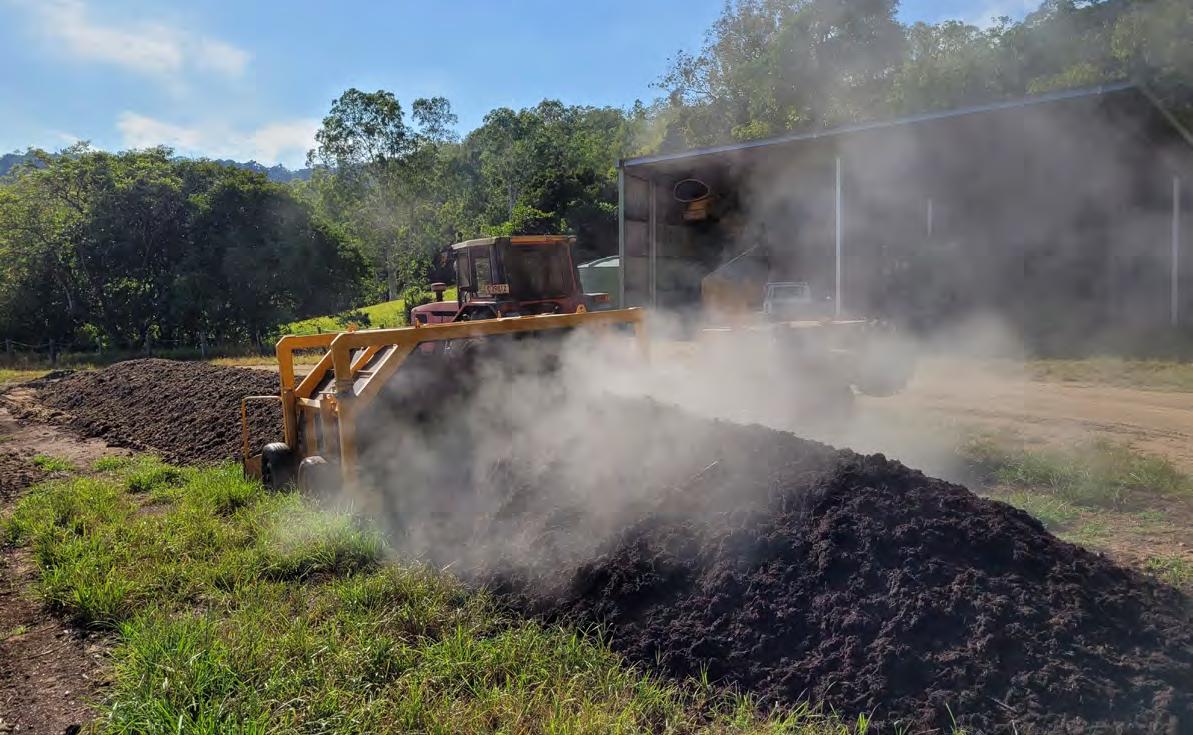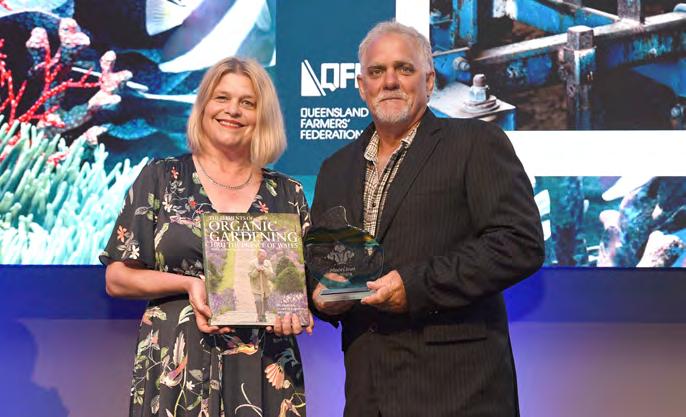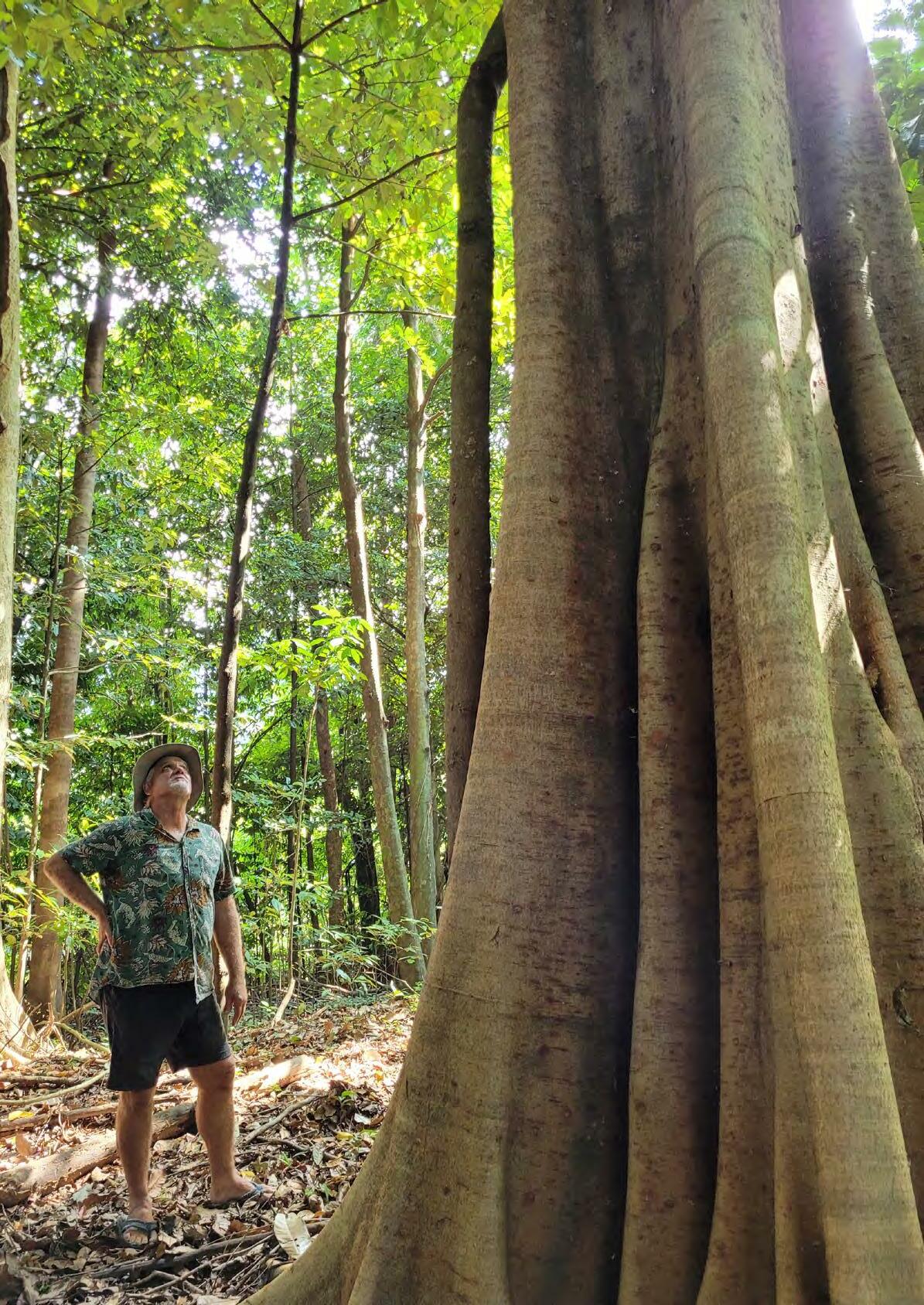
7 minute read
Productive Pursuit
As fertiliser prices skyrocket, Queensland's 2022 Reef Champion is reaping the rewards of changes to nutrient management on the family farm.
BY RENEE CLUFF
Advertisement
$100,000 plus. That’s how much Tony Rossi reckons his family’s enterprise has saved this year alone through precision composting. Over the past seven years, the Rossi family has almost halved synthetic nitrogen application rates on their sugarcane at Aloomba, south of Cairns, by using homemade compost to improve the organic carbon in the soil.
“The industry standard is 140 kilos of nitrogen per hectare and we’re under 80 now,” Tony said.
“When we first set up there wasn’t much in it but this year we’ve improved our soil health, it’s cost a bit more with the diesel increase but we’ve saved an extra hundred thousand dollars because fertiliser is so expensive.
“And we’ve maintained yield.”
Demonstrating that most growers can do the same is among the reasons Tony was named the recipient of the major prize at the Queensland Farmers Federation’s 2022 Reef Champion Awards, winning the Prince’s Trust Australia Environmental Leadership –Reef Sustainability Award.
The accolade recognised how he uses his skills as a chemist to improve on and pioneer farm practices, but also his willingness and passion to share what he’s learned with other growers.
A number crunch on the family’s composting initiative is showing it really paid off in 2022. Between $40,000 and $50,000 was spent making and
distributing the product, however with fertiliser prices soaring, it’s estimated the compost has saved up to $150,000 through reductions in synthetic nitrogen fertiliser.
“It’s not a hippy thing, it’s a business decision based on an understanding of soil health.”
While the compost itself does contain nitrogen and other trace elements, Tony is adamant it’s the organic carbon in the product that sets it apart.
“When you first open cane land up, whether it’s in the Amazon or the Burdekin, it’s about three to four per cent organic carbon,” he explained.
“Over time you strip the carbon and nearly all our cane land in the Queensland industry is 0.5 to 1.8 per cent organic carbon.
“The organic carbon result in a soil test tells you what nitrogen you can apply and if you reduce that nitrogen, you get less yield.
“But if you can increase the organic carbon and make your soil less like sand and more like potting mix, then the plant doesn’t need as much synthetic nitrogen.”
The compost is applied in the drills of the plant cane using a wagon hired from CANEGROWERS Cairns Region. That practice, along with using a mixed species fallow crop beforehand, means no fertiliser is needed at all on new plantings.
“We put 35 to 40 tonne to the hectare in the cane drills with the CANEGROWERS wagon, so we lay it into the drills and then we hill it over,” Tony said.
“We target the root zone so when we cut the cane it’s still there and the roots of the ratoons are growing in higher organic carbon and that’s how we’ve been able to get under 80 tonnes to the hectare of nitrogen application.”
The compost is made up of mulch the family buys from a local business, plus mill mud, cane bagasse, cane trash and council biosolids.
“The compost uses products that are problematic for the council like the biosolids and green waste that often end up in landfill,” Tony said.

Pictured above Tony Rossi was awarded Prince’s Trust Australia Environmental Leadership – Reef Sustainability Award at QFF Reef Champions Awards.
“It gets dumped straight into a pit and we add all our cane bagasse and everything else.
“One bloke’s feeding the biosolids with the excavator and then the other bloke's putting the dry material into it, and it’s mixed in our feedlot mixer and run out into windrows.
“After a few days it all heats up with the composting process and really starts steaming when you turn it.”

Pictured: The Cane Farmer Artist: Lynda Gregg
While the Rossi family aerate their compost with a turner purchased through a Reef Trust grant, Tony is trialling another method to prove all you need is a loader, backhoe or excavator and an acre of land for materials handling.
“The farmer’s got to make it himself or it’s not viable.”
“With the season starting in June/July, a farmer can get his allocation of mill mud, some mulch, access cane bagasse or anything else that’s lying around,” he said.
“Anything green has nitrogen in it and it really gets it cooking - and you can turn it over with a loader.
“A thermometer costs about 25 dollars to monitor the composting process. Initially, the temperature can be as high as 70 degrees Celsius and within a few weeks it will settle into the mid-50s. You can tell the process has finished when it drops down to ambient temperature.
“It can compost within about three months and then in November, you could start with a five-hectare plant cane block and set up your own experiment with reducing synthetic nitrogen rates.”
Tony, his four brothers - Chris, Mark, Peter and Stephen - and nephew Andrew are integral to the business.
Growing up alongside the Mulgrave River was the catalyst for their environmentally friendly practices.
Chris and Tony have been involved in Mulgrave Landcare for 25 years (Tony is Chairman) and have been systematically revegetating riparian areas with native species, knocking out grassy weeds in the process.

Trees are propagated in an on-farm nursery which also supplies the Landcare organisation.
“Grasses don’t grow under shade so where the trees are mature, there are no weeds,” Tony said.
“It’s called the cathedral effect.
“You’ve got to work with the weeds initially because otherwise you get a heap of erosion, but after five or six years the tree’s roots are an interwoven web and the weeds will be shaded out and the tree roots will then keep the bank together.”
The tree planting has also helped keep waters of the creeks cooler, increasing the biodiversity of fish and reptiles and reducing the risk of mass fish kills caused by heat-induced low dissolved oxygen rates.
“There’s even a safety angle because you couldn’t drive a tractor in there anymore, the trees will stop you,” Tony said.
“You’re cutting the erosion, you’re making a biodiversity corridor, you’re cutting out rat harbourage by getting rid of grass seed, and you’re making a nice spot to enjoy with your family.”
Other water quality projects on the farm include sediment traps and revegetated boundary drains, while the family is now planning to build a new lagoon to be used as a combined retention basin and education centre.
Tony also recently received a Wet Tropics Management Authority Cassowary Award for being a community champion.
While he’s proud of the accolades, what’s most important to him is looking after the landscape he loves.
“This valley and the river is not abstract to me, it’s my home.”
“We are Smartcane BMP accredited but the real thing is being a proper steward,” he said.
It’s the right thing to do.”







